8.1: Game from Farm to Table
- Page ID
- 21257
\( \newcommand{\vecs}[1]{\overset { \scriptstyle \rightharpoonup} {\mathbf{#1}} } \)
\( \newcommand{\vecd}[1]{\overset{-\!-\!\rightharpoonup}{\vphantom{a}\smash {#1}}} \)
\( \newcommand{\id}{\mathrm{id}}\) \( \newcommand{\Span}{\mathrm{span}}\)
( \newcommand{\kernel}{\mathrm{null}\,}\) \( \newcommand{\range}{\mathrm{range}\,}\)
\( \newcommand{\RealPart}{\mathrm{Re}}\) \( \newcommand{\ImaginaryPart}{\mathrm{Im}}\)
\( \newcommand{\Argument}{\mathrm{Arg}}\) \( \newcommand{\norm}[1]{\| #1 \|}\)
\( \newcommand{\inner}[2]{\langle #1, #2 \rangle}\)
\( \newcommand{\Span}{\mathrm{span}}\)
\( \newcommand{\id}{\mathrm{id}}\)
\( \newcommand{\Span}{\mathrm{span}}\)
\( \newcommand{\kernel}{\mathrm{null}\,}\)
\( \newcommand{\range}{\mathrm{range}\,}\)
\( \newcommand{\RealPart}{\mathrm{Re}}\)
\( \newcommand{\ImaginaryPart}{\mathrm{Im}}\)
\( \newcommand{\Argument}{\mathrm{Arg}}\)
\( \newcommand{\norm}[1]{\| #1 \|}\)
\( \newcommand{\inner}[2]{\langle #1, #2 \rangle}\)
\( \newcommand{\Span}{\mathrm{span}}\) \( \newcommand{\AA}{\unicode[.8,0]{x212B}}\)
\( \newcommand{\vectorA}[1]{\vec{#1}} % arrow\)
\( \newcommand{\vectorAt}[1]{\vec{\text{#1}}} % arrow\)
\( \newcommand{\vectorB}[1]{\overset { \scriptstyle \rightharpoonup} {\mathbf{#1}} } \)
\( \newcommand{\vectorC}[1]{\textbf{#1}} \)
\( \newcommand{\vectorD}[1]{\overrightarrow{#1}} \)
\( \newcommand{\vectorDt}[1]{\overrightarrow{\text{#1}}} \)
\( \newcommand{\vectE}[1]{\overset{-\!-\!\rightharpoonup}{\vphantom{a}\smash{\mathbf {#1}}}} \)
\( \newcommand{\vecs}[1]{\overset { \scriptstyle \rightharpoonup} {\mathbf{#1}} } \)
\( \newcommand{\vecd}[1]{\overset{-\!-\!\rightharpoonup}{\vphantom{a}\smash {#1}}} \)
\(\newcommand{\avec}{\mathbf a}\) \(\newcommand{\bvec}{\mathbf b}\) \(\newcommand{\cvec}{\mathbf c}\) \(\newcommand{\dvec}{\mathbf d}\) \(\newcommand{\dtil}{\widetilde{\mathbf d}}\) \(\newcommand{\evec}{\mathbf e}\) \(\newcommand{\fvec}{\mathbf f}\) \(\newcommand{\nvec}{\mathbf n}\) \(\newcommand{\pvec}{\mathbf p}\) \(\newcommand{\qvec}{\mathbf q}\) \(\newcommand{\svec}{\mathbf s}\) \(\newcommand{\tvec}{\mathbf t}\) \(\newcommand{\uvec}{\mathbf u}\) \(\newcommand{\vvec}{\mathbf v}\) \(\newcommand{\wvec}{\mathbf w}\) \(\newcommand{\xvec}{\mathbf x}\) \(\newcommand{\yvec}{\mathbf y}\) \(\newcommand{\zvec}{\mathbf z}\) \(\newcommand{\rvec}{\mathbf r}\) \(\newcommand{\mvec}{\mathbf m}\) \(\newcommand{\zerovec}{\mathbf 0}\) \(\newcommand{\onevec}{\mathbf 1}\) \(\newcommand{\real}{\mathbb R}\) \(\newcommand{\twovec}[2]{\left[\begin{array}{r}#1 \\ #2 \end{array}\right]}\) \(\newcommand{\ctwovec}[2]{\left[\begin{array}{c}#1 \\ #2 \end{array}\right]}\) \(\newcommand{\threevec}[3]{\left[\begin{array}{r}#1 \\ #2 \\ #3 \end{array}\right]}\) \(\newcommand{\cthreevec}[3]{\left[\begin{array}{c}#1 \\ #2 \\ #3 \end{array}\right]}\) \(\newcommand{\fourvec}[4]{\left[\begin{array}{r}#1 \\ #2 \\ #3 \\ #4 \end{array}\right]}\) \(\newcommand{\cfourvec}[4]{\left[\begin{array}{c}#1 \\ #2 \\ #3 \\ #4 \end{array}\right]}\) \(\newcommand{\fivevec}[5]{\left[\begin{array}{r}#1 \\ #2 \\ #3 \\ #4 \\ #5 \\ \end{array}\right]}\) \(\newcommand{\cfivevec}[5]{\left[\begin{array}{c}#1 \\ #2 \\ #3 \\ #4 \\ #5 \\ \end{array}\right]}\) \(\newcommand{\mattwo}[4]{\left[\begin{array}{rr}#1 \amp #2 \\ #3 \amp #4 \\ \end{array}\right]}\) \(\newcommand{\laspan}[1]{\text{Span}\{#1\}}\) \(\newcommand{\bcal}{\cal B}\) \(\newcommand{\ccal}{\cal C}\) \(\newcommand{\scal}{\cal S}\) \(\newcommand{\wcal}{\cal W}\) \(\newcommand{\ecal}{\cal E}\) \(\newcommand{\coords}[2]{\left\{#1\right\}_{#2}}\) \(\newcommand{\gray}[1]{\color{gray}{#1}}\) \(\newcommand{\lgray}[1]{\color{lightgray}{#1}}\) \(\newcommand{\rank}{\operatorname{rank}}\) \(\newcommand{\row}{\text{Row}}\) \(\newcommand{\col}{\text{Col}}\) \(\renewcommand{\row}{\text{Row}}\) \(\newcommand{\nul}{\text{Nul}}\) \(\newcommand{\var}{\text{Var}}\) \(\newcommand{\corr}{\text{corr}}\) \(\newcommand{\len}[1]{\left|#1\right|}\) \(\newcommand{\bbar}{\overline{\bvec}}\) \(\newcommand{\bhat}{\widehat{\bvec}}\) \(\newcommand{\bperp}{\bvec^\perp}\) \(\newcommand{\xhat}{\widehat{\xvec}}\) \(\newcommand{\vhat}{\widehat{\vvec}}\) \(\newcommand{\uhat}{\widehat{\uvec}}\) \(\newcommand{\what}{\widehat{\wvec}}\) \(\newcommand{\Sighat}{\widehat{\Sigma}}\) \(\newcommand{\lt}{<}\) \(\newcommand{\gt}{>}\) \(\newcommand{\amp}{&}\) \(\definecolor{fillinmathshade}{gray}{0.9}\)States require restaurants to only serve game that has been slaughtered and dressed under inspection. This can be accomplished under voluntary USDA FSIS inspection or equivalent foreign inspection. The Hotline receives inquiries about these food animal species. Included here are answers to questions about game animals.
What is game?
Game are wild animals and birds. Farm-raised game are originally wild species of animals and birds that are now being raised domestically for sale under voluntary USDA inspection. The U.S. Food and Drug Administration (FDA) has jurisdiction over imported game. Large native game animals living in America include antelope, buffalo, bear, caribou, deer, elk, moose, reindeer, and wild boar. Elsewhere in the world, even rarer varieties eaten by humans are camel, elephant, kangaroo, wild goats, wild sheep, zebra, and other species.
Small game animals include alligator, rabbit, squirrel, beaver, muskrat, opossum, raccoon, armadillo, porcupine, and other species such as nutria. Game birds include grouse, guineafowl, partridge, squab (young pigeon), quail, pheasant, ratites (emu, ostrich, and rhea), wild ducks, wild geese, wild turkey, and other species. Rock Cornish hens — thought by many consumers to be game birds — are actually young domesticated chickens. Ratites and squabs are now under mandatory USDA inspection.
NOTE: Game species raised on farms under appropriate regulations can be sold. Wild game species that can be legally hunted under Federal or State regulatory authority cannot be sold, but can be harvested for personal consumption. If you have questions about the harvest of wild game species, contact your State fish and wildlife agencies, or the U.S. Fish and Wildlife Service for Federal regulations on migratory species.
Background on “Venison” Game Animals
In culinary terms, “venison” can be meat from deer, elk, moose, caribou, antelope, and pronghorn. However, when this meat is offered for sale, the name of the specific animal must be specified on the package label.
Deer live in woodlands all over Europe, Asia, northern Africa and America. There are many deer species of various sizes but all the males grow antlers. The meat is lean and has a gamey flavor that can be made milder if soaked overnight.
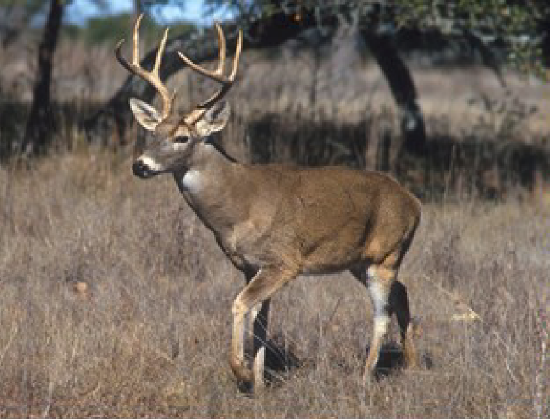
Wild Whitetail Deer- Wikipedia
Elk meat tastes like mild (almost sweet) beef, with only a very faint venison flavor. Elk can be substituted equally for venison in most standard venison recipes. Elk are from North America, Europe, and Asia.
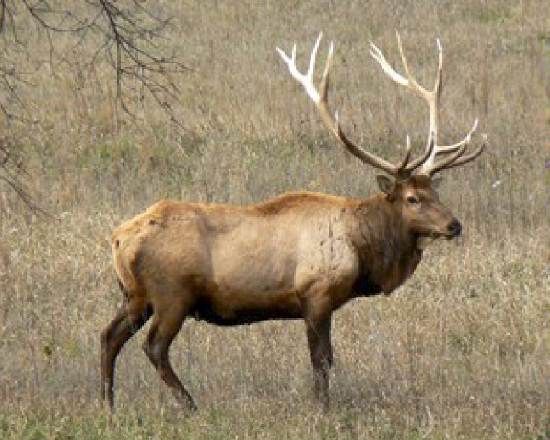
Bull Elk- Wikimedia commons
Moose is the largest member of the venison family standing about 6 1/2 feet at the shoulder. It’s native from North America. The meat is similar to elk.
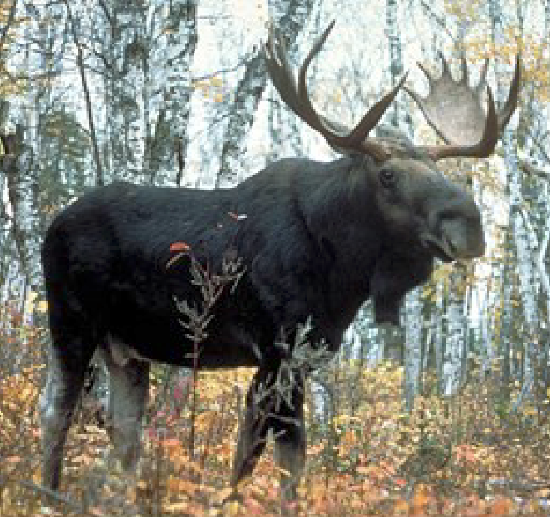
Bull Moose- Wikipedia
Other Game Animals
Caribou (reindeer) are slightly larger than white-tailed deer. Both males and females have antlers. The meat is somewhat sweeter than other venison. They live primarily in North America and Siberia.
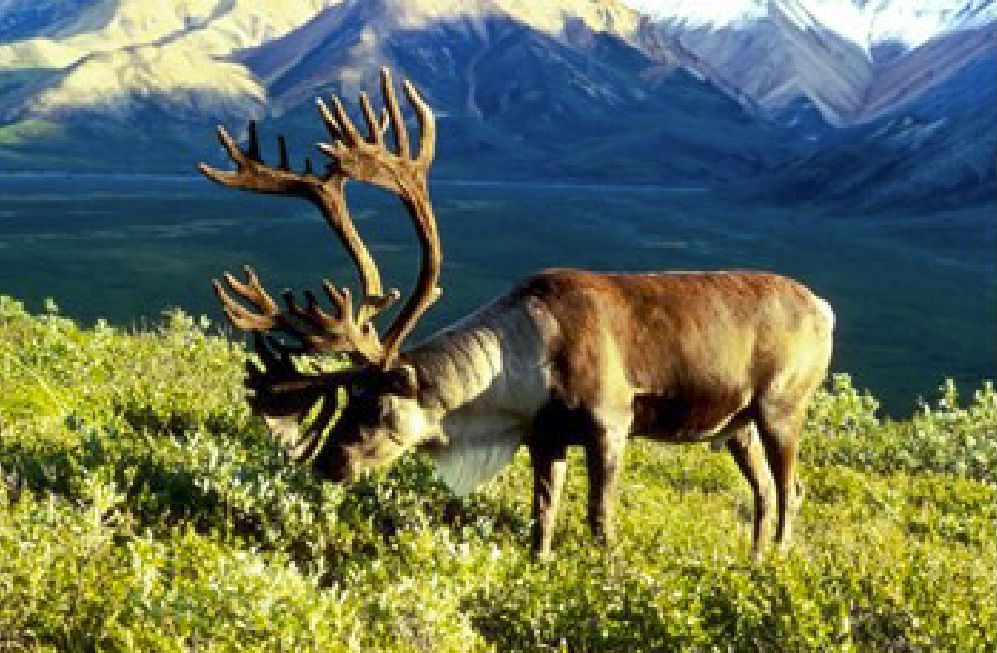
Caribou- Wikimedia Commons
Antelope are currently farmed in Texas, where black buck and nigari antelope, native to Africa, are allowed to roam on huge preserves. Males are called bucks, bulls, or stags; females, does or cows; and un-weaned young are fawns or calves. Antelope meat is leaner, but similar in taste to that of deer.
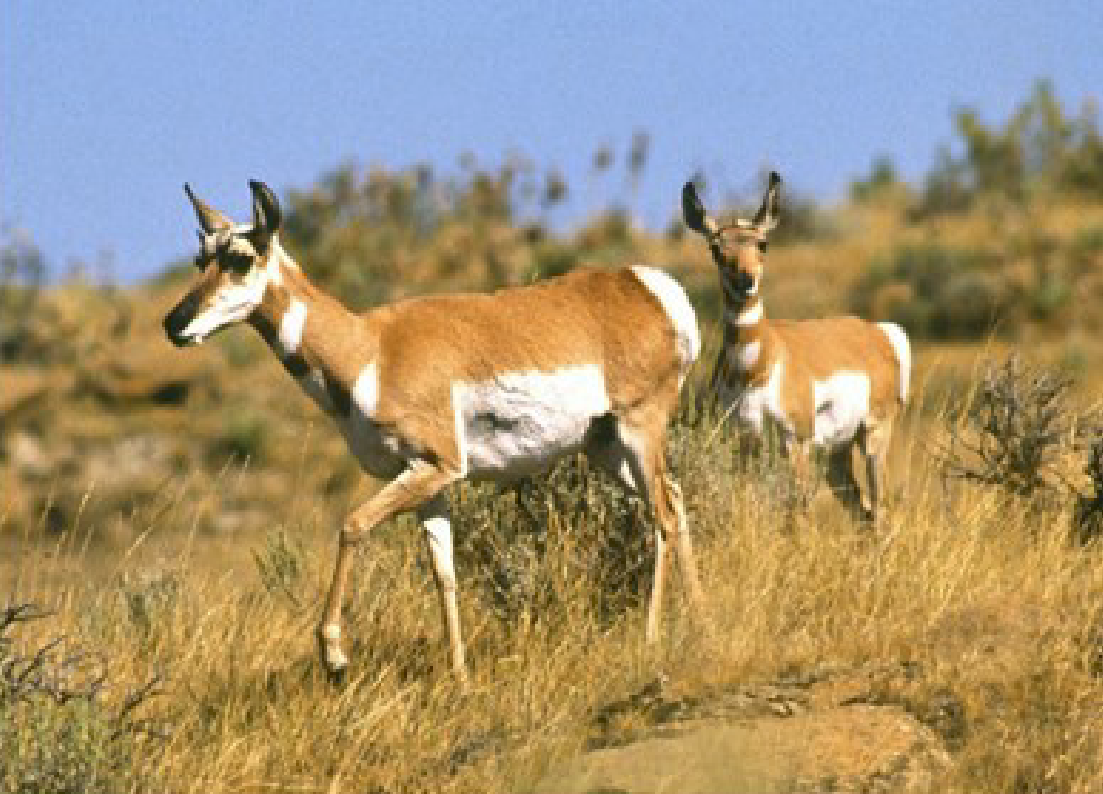
Pronghorn Antelope- Wikimedia Commons
Pronghorn (once classified as “antelope”) is the last survivor of a species native to North America, with the largest herd in Wyoming. Pronghorn meat is leaner, but similar in taste, to that of deer.
Bison (buffalo) is native to North America. Once about 60 million in number, bison were hunted almost to extinction by the 1890’s. Currently there are more than 150,000 animals being raised across North America today. Bison is said to have a sweeter, richer flavor than bee
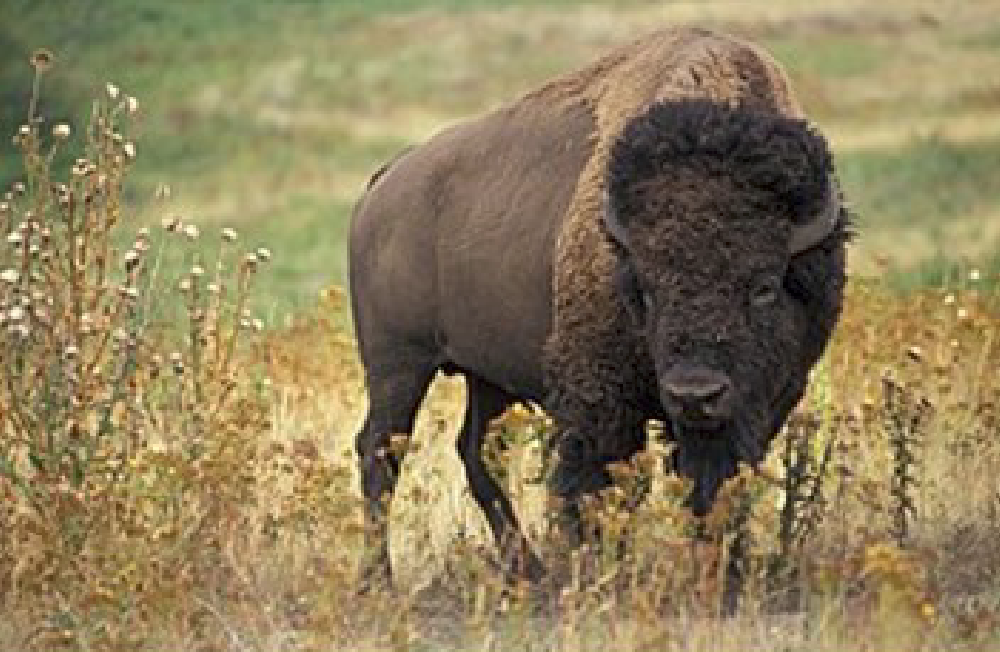
American Bison- Wikipedia
Musk-ox is a heavy-set, shaggy-coated wild ox that lives in northern North America, the Arctic islands, and Greenland. The meat tastes similar to buffalo.
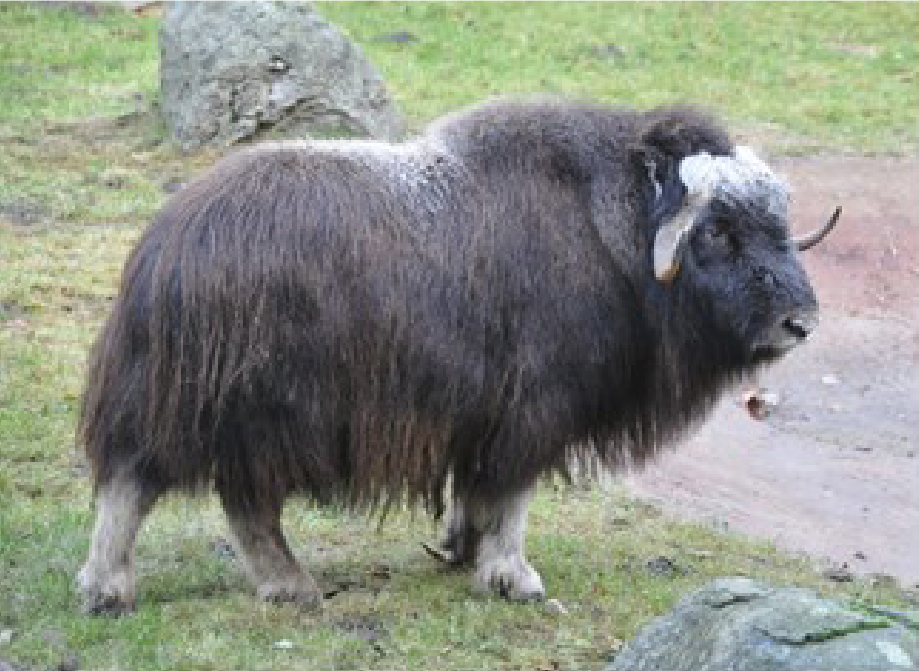
Musk-ox - Wikimedia commons
Collared Peccary (javelina) is a hoofed animal native to parts of Mexico, South America, and the southwest U.S. A substitute is fresh pork.
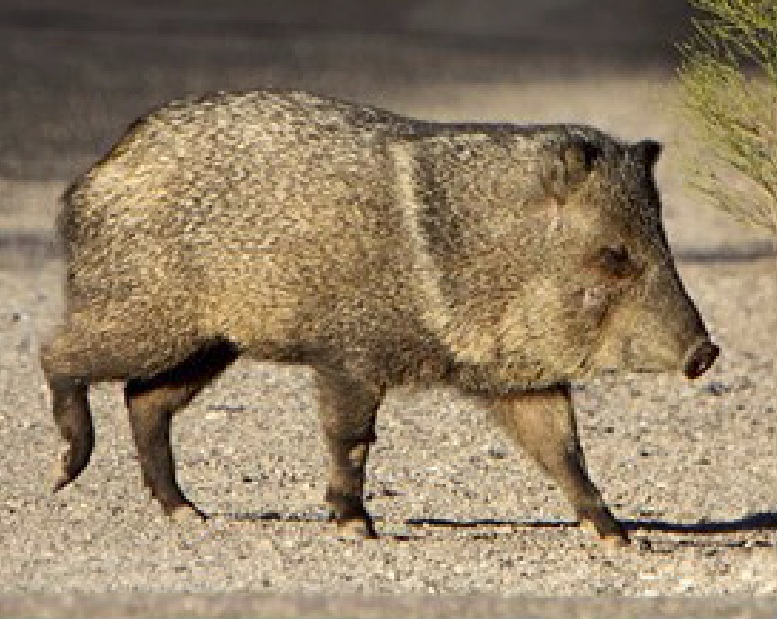
Collared Peccary- Wikimedia Commons
Rabbits sold for consumption in the U.S. are not North American cottontails, but are usually either crosses between New Zealand and Belgian varieties, Chinese rabbits, or Scottish hares
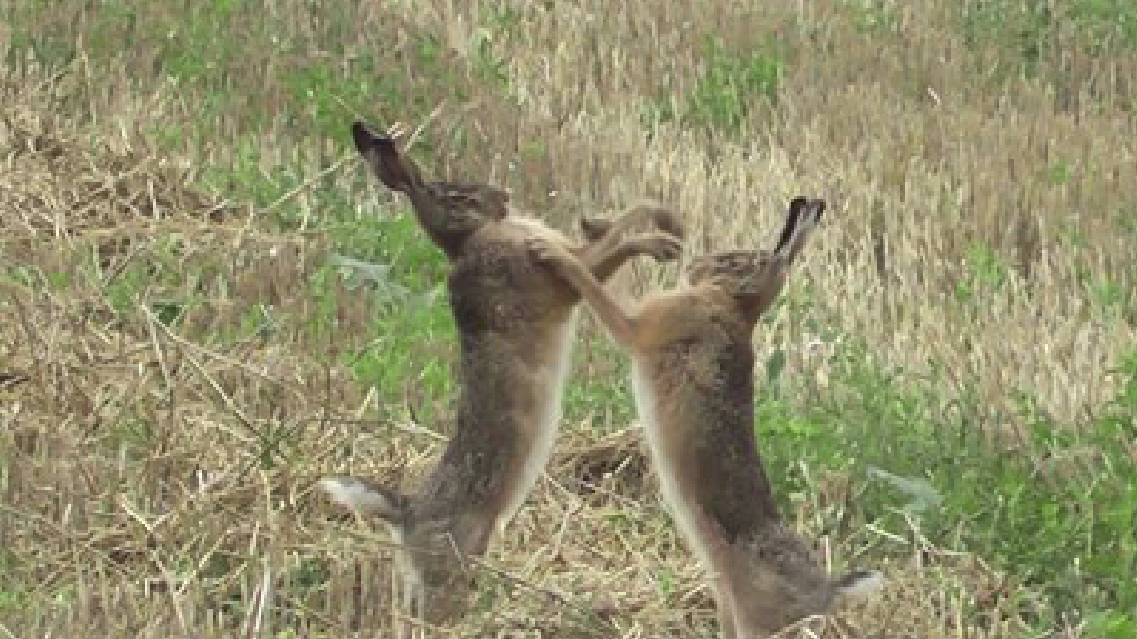
European Hares- Wikipedia
Wild boars, along with feral (wild) hogs, are found in 23 states in the U.S. and are estimated to number over 2 million. Like our domestic swine, these animals are not native to North America, but were originally brought over from other continents. Originally domesticated and then released into the wild, these animals are now hybrids.
While some states have limited hunting seasons, most states consider them a nuisance and encourage hunting them for personal consumption
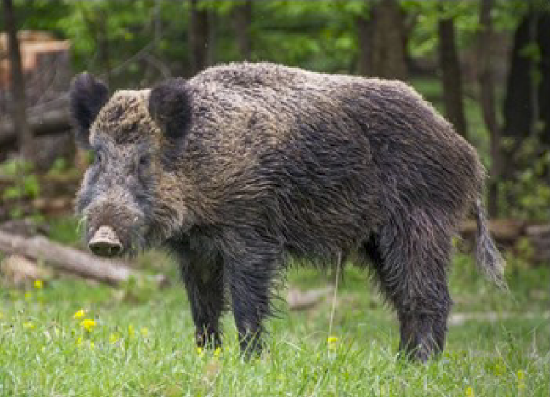
Feral Hog- Wikimedia commons
Game Birds - see photos in Topic One about Poultry
The game bird industry in the U.S. raises millions of birds for sale to restaurants and direct to consumers. These include up to 10 million pheasants, 37 million quail (including 12 million Bobwhite), 4 million Chukar partridges, 1 million Mallard ducks, 200,000 wild turkeys, and several other bird species
Wild Ducks – The Chinese were the first to raise wild ducks domestically for food. Today’s domestic wild ducks are descendants of either the Muscovy or Mallard species. America’s Long Island ducks are offspring of Pekin ducks (a variety of Mallard) brought from China in the late 1800’s. A young duck or duckling (usually under 8 weeks of age) has dark, tender meat and weighs about 3 ½ to 5 pounds. A mature duck is usually over 6 months of age and has tougher meat.
Goose – Geese were farm-raised in ancient Egypt, China, and India. Today’s goose weighs between 5 and 18 pounds. A young bird of either sex (“goose” is the female of the species; “gander,” the male) has tender meat, while a mature goose of either sex has tougher meat.
Guineafowl – This relative of the chicken and partridge, sometimes called a guinea hen or African pheasant, was thought to originate in Guinea, West Africa. A young guineafowl, about 11 weeks old, has tender meat, while a mature bird has tougher meat. Female guinea fowl are tenderer than males. The meat is light red and slightly dry with a mild gamey flavor. Due to their small size – about 2 to 3 pounds, including giblets, guinea fowl are usually sold whole. Barding with fat helps to keep this lean bird moist.
Partridge — There are no native partridge species in the United States. Most partridge in the market are from European or African varieties. The Grey partridge, a European species, was imported from Hungary and raised in England. Found as far away as the Middle East, this variety is sometimes called Hungarian partridge. Chukar is a partridge species from India.
Pheasant – Originally from Asia, the female of this medium-size game bird (weighing about 3 pounds) has more tender, plump, and juicy meat than the male, which weighs about 5 pounds. Young birds can be roasted, but older birds need moist heat because their flesh is drier and leaner.
Quail – American quail are known regionally by various names: Bobwhite, partridge, and quail (blue, California, mountain and Montezuma). American quail nest on the ground and are not related to the European quail of the partridge family. A ready-to-cook quail weighs about 3 to 7 ounces, including the giblets. Due to their small size, they are usually roasted and served whole. The meat is dark, but mild flavored.
Ratites – This family of flightless birds has small wings and flat breastbones. Ostrich, emu (“E-mew”) and rhea (“REE-ah”) are members of this family. Ostrich is native to Africa; emu, to Australia; and rhea, to South America — particularly the grasslands of Argentina. The meat looks like beef and the flavor is similar, but a little sweeter. For more information,
see: www.fsis.usda.gov/Fact_Sheets/Ratites_Emu_Ostrich_Rhea/index.asp.
Squab or Pigeon – This species originated in the Middle East and Asia, and is one of the oldest birds known to man. A squab is a young, immature pigeon about 4 weeks old. Because it is too young to fly, the meat is very tender. Squabs usually weigh about 12 to 16 ounces, including giblets, and have dark, delicately flavored meat. They are usually stuffed whole and roasted. A pigeon has been allowed to mature and has tougher meat than a squab.
Wild Turkeys – Turkey is one of North America’s native birds. The name “turkey” was originally applied to an African bird, now known as the guineafowl, which was believed to have originated in Turkey. When the Europeans came upon the American turkey, they thought it was the same bird as the African guinea fowl, and so gave it the name turkey, although the two species are quite distinct. Compared to their domestic counterparts, wild turkeys are leaner, less meaty, not as tender, and have a stronger flavor.
Are game animals inspected by USDA?
Some game animals are inspected by USDA and others by the FDA. USDA’s Food Safety and Inspection Service (FSIS) has mandatory inspection authority over all food products from cattle, sheep, swine, goats, horses, mules, and other equines, chickens, turkeys, ducks, geese, guineas, ratites (emu, ostrich, and rhea), and squab. This includes processed products containing more than 3 percent raw meat or 2 percent or more cooked poultry meat.
Additionally, FSIS does voluntary inspection of reindeer, elk, deer, antelope, water buffalo, bison, migratory water fowl (birds that swim such as ducks and geese), game birds, and rabbits.
FDA has jurisdiction over imported game not covered by the Federal meat and poultry inspection laws. Meat and poultry exported from another country must meet all safety standards applied to foods produced in the United States, and this must be verified annually.
How are game farm Raised?
Game animals are either raised on farms or ranches. If ranch raised, the animals are allowed to roam at will over hundreds of acres, foraging off foliage. Farm-raised game live in more confined outdoor areas and are fed grains such as wheat, alfalfa, or corn. What the animal eats can affect the taste of the meat.
Game bird species are raised separately from each other. Some birds consider birds from other species as intruders and will kill them.
The chicks need a clean, healthy environment, free of predators and parasites, with lots of clean, fresh water, fresh air, and feed. They are kept in warm buildings with floors covered with litter made of pine shavings, rice or peanut hulls, sugarcane fiber, and ground corncobs. Game birds are fed a diet similar to domestic poultry, typically a low-fat mix which is higher in protein than that fed to chickens. The feed may contain corn, alfalfa meal, wheat, soybean, meat bone scrap, whey, fish meal, and a vitamin-mineral mix. The FDA regulates animal feed.
When they are a few weeks old, game birds may be transferred to flight cages, typically 130-feet long, 12-feet wide, and 6-feet high, with a floor cover of natural vegetation. There they must be protected from weather extremes, predators, people, and themselves. Access to a shed protects them from the elements.
Are hormones and antibiotics used in game animal production?
Hormones are not used in raising game birds or game animals; however, antibiotics may be used. Wild birds and waterfowl are susceptible to many diseases and parasites, especially where large numbers are being raised in relatively small areas. The FDA approves medications that can be used to treat food animals. Very few drugs have been approved for game birds. Those approved are administered in their feed or water. The drugs are either antibiotics or anti-parasitics.
The FDA has strict guidelines for the use of drugs in animal production. If a drug is given, it must be used according to its labeling. Almost all these drugs require a “withdrawal” period — usually up to 5 days — from the time it is administered until it is legal to slaughter the animal or bird. This is so residues will not be in the meat. FSIS randomly samples the meat at slaughter and tests for any drug residues.
What foodborne bacteria are associated with game?
As with any perishable meat, poultry, or fish, harmful bacteria, such as Salmonella and Escherichia coli O157:H7, can be found on raw or undercooked game. They live in the intestinal tracts of game, livestock, poultry, dogs, cats, and other warm-blooded animals, and must be eaten to cause illness.
There are about 2,000 serotypes of Salmonella bacteria; they are found in all game—both warm- and cold-blooded—including birds, mammals, reptiles and amphibians.
E. coli (including E. coli O157:H7 and other serotypes) can colonize in the intestines of animals, which can contaminate muscle meat at slaughter. Coli O157:H7 is a rare strain found in ruminates, including deer. The enterohemorrhagic E. coli produce a “Shiga toxin” that causes cell damage and may lead to Hemolytic Uremic Syndrome (HUS), which can cause kidney failure in the very young. A similar illness, thrombotic thrombocytopenic purpura (TTP), may occur in adults.
Bacteria multiply rapidly in the “Danger Zone” — temperatures between 40 and 140 °F. Cross- contamination can occur if raw meat or its juices come in contact with cooked foods or foods that will be eaten raw, such as salad. Freezing does not kill bacteria. Cooking to a safe minimum internal temperature kills bacteria
How does game meat differ from domestic meat?
Because their diets and activity levels are not the same as that of domestic animals and poultry, the meat of farm-raised game animals has a different flavor—stronger than domesticated species and milder than wild game. The factors that determine the meat’s quality include the age of the animal (younger animals are more tender), the animal’s diet, and the time of year the animal was harvested. (The best is in the fall, after a plentiful spring and summer feeding.)
Equally important is how the animal was handled in the field. The animal should be eviscerated within an hour of harvest, and the meat refrigerated within a few hours. Meat is damaged (and sometimes ruined) if it is not dressed, transported, and chilled properly.
In general, wild game is less tender than meat from domestic animals because the wild animals get more exercise and have less fat. Any fat is generally bad tasting and should be removed. For maximum tenderness, most game meat should be cooked slowly and not overdone. It can be cooked with moist heat by braising or with dry heat by roasting. Ways to keep game moist include basting, larding, or barding (see “Cooking Methods”).


